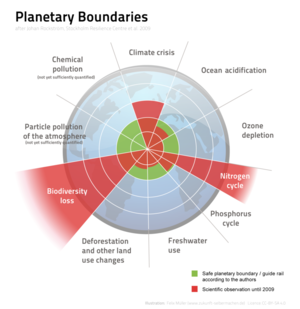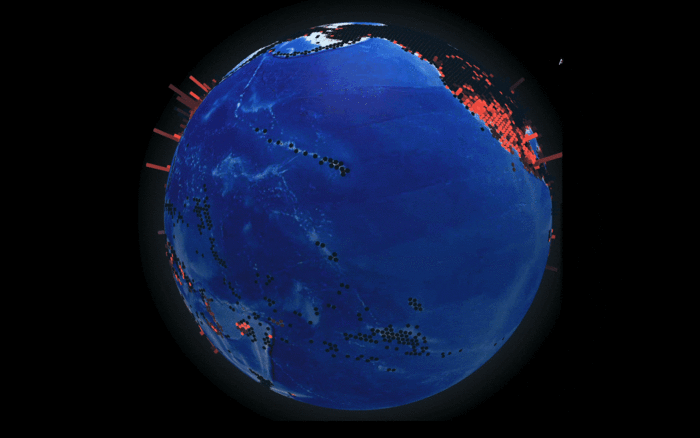Ecological crisis: Difference between revisions
From BurnZero
No edit summary |
No edit summary |
||
| Line 1: | Line 1: | ||
<html><iframe src="https://giphy.com/embed/ | <html><iframe src="https://giphy.com/embed/1L6EE1TYGJjxyTY54L" width="100%" height="300" frameBorder="0" class="giphy-embed" allowFullScreen></iframe></html> | ||
[[File:Planetary Boundaries.png|alt=Planetary Boundaries|thumb|Planetary Boundaries<ref>https://www.frontiersin.org/articles/10.3389/fcosc.2020.615419/full</ref>]] | [[File:Planetary Boundaries.png|alt=Planetary Boundaries|thumb|Planetary Boundaries<ref>https://www.frontiersin.org/articles/10.3389/fcosc.2020.615419/full</ref>]] | ||
Revision as of 23:54, 4 April 2022

Planetary Boundaries[1]
In the 1960s, humans took about three-quarters of what the planet could regenerate annually. By 2016 this rose to 170 percent. The planet cannot keep up with current human demand and time is running out.[2]
The world won't end tomorrow, next year or the year after. But 97% of scientists (i,e, 100% minus the lobbyists) predict it will get progressively worse, each day we do nothing we roll a dice where the probability of something seriously bad happening goes up and up. We have already seen the following:
- Climate change - since records began in 1880, nineteen of the twenty hottest years have occurred since 2000[3].
- Biodiversity loss - there has been a 68% average decline in the population sizes of mammals, birds, amphibians, reptiles, and fish between 1970 and 2016[4].
- Deforestation - more than half the world’s tropical forests have been destroyed since the 1960s[5].
- Ocean acidification - more CO2 in the atmosphere means more acidity in the oceans.
- Microplastics via overconsumption - humanity is running an ecological Ponzi scheme in which society robs nature and future generations to pay for boosting incomes in the short term.[2]
- Ozone depletion, the nitrogen cycle, the phosphorus cycle...
These issues combined are accelerating us towards collapse. It is predicted that specific areas of the world will become uninhabitable by 2100[6] these are the areas which will be effected the most:
References
- ↑ https://www.frontiersin.org/articles/10.3389/fcosc.2020.615419/full
- ↑ 2.0 2.1 Yale Environment 360: Avoiding a ‘Ghastly Future’: Hard Truths on the State of the Planet. Accessed on 3rd March 2022 via:https://e360.yale.edu/features/avoiding-a-ghastly-future-hard-truths-on-the-state-of-the-planet
- ↑ NASA, Global Temperature: https://climate.nasa.gov/vital-signs/global-temperature/
- ↑ IPBES, Media Release, Nature’s Dangerous Decline ‘Unprecedented’; Species Extinction Rates ‘Accelerating’ May 2019
- ↑ International Union for Conservation of Nature. (2021, February). Deforestation and forest degradation. https://www.iucn.org/resources/issues-briefs/deforestation-and-forest-degradation
- ↑ https://interaktiv.morgenpost.de/klimawandel-hitze-meeresspiegel-wassermangel-stuerme-unbewohnbar/en.html
